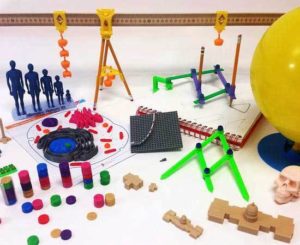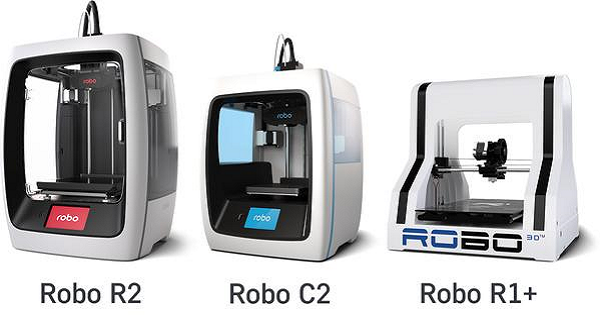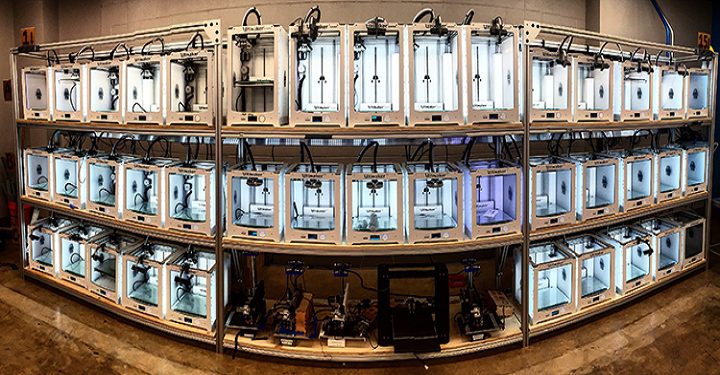Robo to Integrate 3DPrinterOS Software So Educators Can Easily Adopt 3D Printing in the Classroom
This summer, 3D printer manufacturer Robo announced that it had acquired Atlanta-based company MyStemKits, which provides the largest online library of STEM curriculum in the world, in order to help students of all ages learn about 3D printing in an easy, hands-on way. Robo also makes education a priority, and has partnered with other companies in the past in an effort to further access to, and implementation of, 3D printing education.
Four years ago, MyStemKits, which also provides 3D printable models for K-12 schools, partnered with 3D printing software provider 3DPrinterOS, and now Robo has also announced a partnership with the company. Robo will be integrating the 3DPrinterOS software across all of its 3D printer models, so that educators and schools can benefit from it.
Braydon Moreno, the Co-Founder of Robo 3D, said, “3DPrinterOS is the closest thing to an interoperability standard for 3d printing which makes it easy for our business to expand to all educational institutions, printer manufacturers, and continue to build innovative applications.”
 Now that Robo has acquired MyStemKits, this move to 3DPrinterOS will be able to quickly increase the access to MyStemKits’ curriculum, and its 3D printable educational models, across a wide range of over 75 different desktop 3D printers.
Now that Robo has acquired MyStemKits, this move to 3DPrinterOS will be able to quickly increase the access to MyStemKits’ curriculum, and its 3D printable educational models, across a wide range of over 75 different desktop 3D printers.
3DPrinterOS also has an interest in education – after all, the MyStemKits platform was actually built on its software. The platform provides easy, one-click 3D printable models that were developed specifically for students in K-12 schools. By switching its software platform to 3DPrinterOS, Robo is standardizing its approach to 3D printing education and making it available to use over even more kinds of 3D printers.
“What we have seen is that with 3D printing and MyStemKits, student engagement increases because you are teaching students math, science, and STEM subjects in a unique and exciting way. This natural introduction to the technology inspires students to want to design in 3D and create 3D printed things on their own,” said Moreno.
As the curriculum included in MyStemKits meets both Common Core State Standards (CCS) and Next Generation Science Standards (NGSS), it’s very easy for teachers to adopt 3D printing in the classroom with the platform, along with making models, which are readily available through MyStemKits, that can be used as visual learning aids.
“It’s exciting to see applications built on 3DPrinterOS, be successful, get acquired, and expand globally. Solving interoperability for the 3d printing community is in our company DNA, and we are looking forward to reaching more educators with the Robo 3D Partnership,” said 3DPrinterOS CEO John Dogru.
Regardless of whether schools own a Dremel, Robo, Ultimaker, or nearly any other kind of desktop 3D printer, the vast library of 3D printable STEM models offered by MyStemKits is available instantly if the system is built on top of the cloud streaming software by 3DPrinterOS.
![]() In addition, by adopting the 3DPrinterOS software across legacy Robo 3D printers, as well as any future systems developed by the manufacturer, Robo owners will be able to enjoy access to SSO compatibility, filament tracking, data analytics, and cloud 3D printer management – all of which are part and parcel of the software’s educational license.
In addition, by adopting the 3DPrinterOS software across legacy Robo 3D printers, as well as any future systems developed by the manufacturer, Robo owners will be able to enjoy access to SSO compatibility, filament tracking, data analytics, and cloud 3D printer management – all of which are part and parcel of the software’s educational license.
If you are an educator and are interested in using MyStemKits to introduce 3D printing in your classroom, you can register here for a free, two week trial that will allow you to view all of the available MyStemKits lessons. You can also download and 3D print up to two of those lessons for free.
What do you think? Discuss this news and other 3D printing topics at 3DPrintBoard.com or share your thoughts in the Facebook comments below.
Duke University’s 3D Printing Innovation Lab Allows Surgeons to Create Accurate 3D Printed Medical Training Models
3D printing is becoming increasingly more accessible and affordable in many industries, including the medical field. We often see the technology used for the purposes of creating accurate training models and simulators, so that medical professionals can practice surgeries and procedures ahead of time – this not only saves on costs, but can also allow surgeons to offer a better level of care.
Tawfig Khoury, MD, an otolaryngology (ear and throat) resident at Duke University, is focused on the latter, and uses 3D printing to improve patient care. He makes 3D printed medical models of the ear’s delicate temporal bones, which are later used for the purposes of medical training.
“One focus of my research has been taking CT scans of temporal bones, and printing an exact, patient-specific replica. Our residents can then practice drilling and performing other tests without having to work on an actual patient,” Dr. Khoury explained.
Dr. Khoury works on his 3D printed models at the university’s Innovation Co-Lab Studio, which contains a network of over 80 3D printers, ranging from MakerBot and Markforged to Ultimaker and Formlabs, that have been used for various projects since the facility began to really grow last year and explore new uses for 3D printing at the university.
“With recent renovations, we now have a state-of-the-art facility, with high-end equipment across an entire floor dedicated to the lab,” Dr. Khoury said.
“The Innovation Lab is a great example of how different departments across the hospital, as well as other healthcare groups, residents, and students, can work together to create something of value for the community.”
The lab, previously described as a “creativity incubator,” also includes 3D scanning equipment, CNC machines and laser cutters, digital modeling workstations, and a multitude of electronics.
Physicians from several of the university’s medical specialties, including cardiology, neurosurgery, and neurology, use the patient record system Epic to access an ordering system in order to have medical models 3D printed in the studio from ultrasounds and CT and MRI scans. Occasionally, the Innovation Co-Lab Studio can provide its 3D printing services at no cost if the 3D printed replica models are created specifically for patient care.
In order to receive and handle requests for 3D prints from around the world, the studio uses 3DPrinterOS, the popular online cloud management system, as a service to the university’s community. 3DPrinterOS users have access to an online, live-streaming video of the project while it’s being 3D printed.
Since the facility’s expansion, a wider community of users have been taking advantage of its services. The expansion also gives Dr. Khoury the opportunity to, according to a post by Scott Behm with Duke’s Department of Surgery, “set his sights on some short- and long-term goals.”
Dr. Khoury feels that 3D printing, even though it can already create accurate models for the purposes of medical training, can go even further at the university. Before his residency at Duke is complete, he hopes to set up an efficient system in order to assist patients with facial trauma who must have maxillofacial reconstruction surgery. His main goal in this is to enable the routine creation of 3D printed models for eventual use in implants for this type of procedure.
Someday in the future, Dr. Khoury believes that we will be able to rely on 3D printers as a way to create organic replacement organs or body parts out of bioink or hydrogel, such as an eardrum, which can then be infused with live cells and implanted in a patient’s body.
Discuss this story and other 3D printing topics at 3DPrintBoard.com or share your thoughts in the Facebook comments below.





